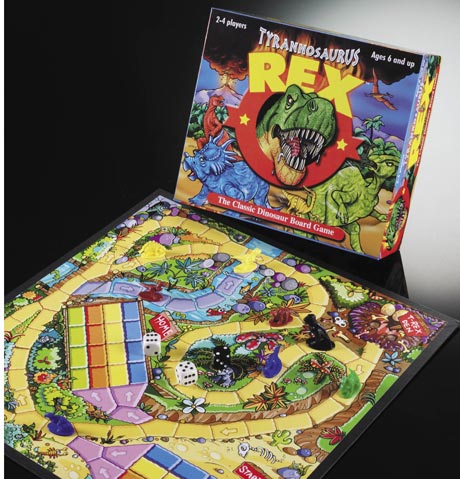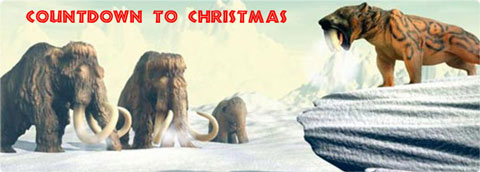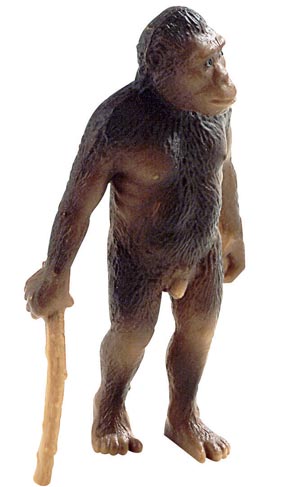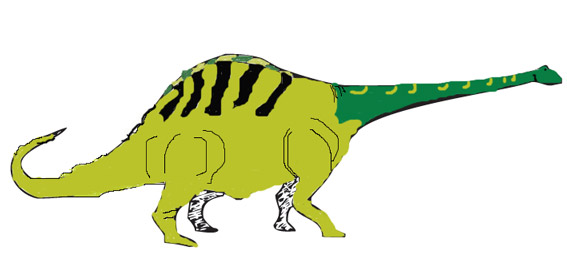Meganeura – Here we Come!
Dragonflies with wingspans as big as hawks may not be every-body’s cup of tea, but a team of researchers from Arizona State University in a study focused on calculating the past oxygen concentrations in the atmosphere have set out to create some super-sized bugs.
Three hundred million years ago, during the Carboniferous geological period, tropical swamps were patrolled by a variety of flying insects, the largest known was the huge dragonfly Meganeura, with a wingspan approaching 75 centimetres in diameter. Whilst down on the ground, huge arthropods, some of them more than two metres long scuttled through the undergrowth. Not the sort of place you would want to visit if you have a disliking of creepy crawlies.
Biologists and Palaeobiologists have been working on an extensive project to assess oxygen concentrations on the effect of insect growth. The team have managed to produce super-sized dragonflies, ones which are 15% bigger than normal by raising the insects in chambers that imitate Earth’s high oxygen concentrations during the Carboniferous.
A Dragonfly Moulting into its Adult Stage
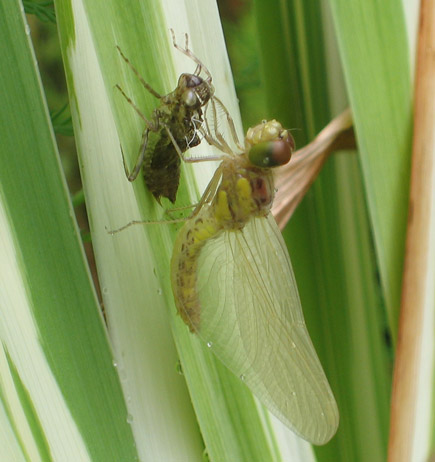
Picture credit: Everything Dinosaur
The research, presented to the annual conference of the Geological Society of America, meeting in Denver, Colorado provides support for the theory that super-sized ancient invertebrates and high atmospheric oxygen levels were not coincidental. The study may also help scientists to gain an insight into more recent oxygen levels on our planet, as there is conflicting data on atmospheric oxygen concentrations from the late Mesozoic and into the Cenozoic.
Lead author, palaeobiologist John VandenBrooks of Arizona State University said:
“No one has been successful growing dragonflies under controlled laboratory conditions before, at least to my knowledge. This has allowed us to ask the question – how have oxygen levels through time influenced the evolution of insects?”
The fossil record has preserved a spectacular record of giant insects and arthropods from the Carboniferous. During this period in Earth’s history oxygen levels were up to 50% higher than they are today, with oxygen making up something like 31% of the atmosphere, compared to today’s more modest 21%.
To read an article about the discovery of an amazing insect fossil in the United States: Spectacular insect fossil discovered in America.
In our own studies with locusts, the rate of breathing changes depending on the amount of oxygen an insect is exposed to. If you place a locust in a sealed chamber and increase the concentration of oxygen in the air, the rhythmic movement of the abdomen slows down. It is the beating of the abdomen that helps draw air and that all important oxygen into the creature’s body via its tracheal breathing tubes.
If the concentration of oxygen is decreased the animal has to “breath harder” and the beating of the abdomen increases. How insects and arthropods were able to grow to huge sizes during the Carboniferous may be due to a number of factors, but the concentration of oxygen levels would have had a strong influence as this new research shows.
Super-sized Dragonflies
VandenBrooks and his team raised a number of “living fossils”, creatures such as different beetles, cockroaches and dragonflies in three habitats, each with different oxygen concentrations. One habitat had oxygen concentrations at Carboniferous levels, the second had conditions of just 12% oxygen, (the lowest oxygen level since complex life appeared on Earth during the Cambrian). The final habitat mimicked modern atmospheric conditions with an oxygen level of 21%.
The team discovered that dragonflies and beetles grew faster, as well as bigger, in a high-oxygen environment, while cockroaches grew slower and remained the same size. All but two species in the study grew smaller than normal at the lower concentration of oxygen.
A study of invertebrate fossils preserved in amber (fossilised tree resin) could help to correlate the data, providing a basis to help determine oxygen levels in the Earth’s atmosphere in the Cenozoic. If measurements of the breathing tubes of these creatures preserved in Baltic amber dating from fifty million years ago, could be taken then this data and the American research could be combined to help map ancient oxygen levels.
Postdoctoral research fellow, VandenBrooks added:
“We started out with insect physiology to understand the fossil record better, in light of data from modern species. Then we realised we might have a biological tool to estimate ancient oxygen levels – a proxy – using that physiology in specimens trapped in amber.”
Looking after the dragonflies was never going to be easy, especially since they spend the vast majority of their lives as water-loving nymphs. The team had to hand feed their charges with worms, crustaceans and as they got bigger, larger prey such as guppy fish. When adult dragonflies emerge, to spend the last part of the lives as swift fliers, whizzing around in a bid to find a mate, they begin breathing through a network of tracheal air tubes.
For almost six months, 225 nymphs, (75 per controlled habitat) had to be hand fed, as VandenBrooks admits:
“It wasn’t quick, but it paid off.”
After the dragonflies and the other creatures changed into their adult forms, the researchers measured their breathing-tube volumes. They discovered that high oxygen concentrations lowered tracheal volume, while low oxygen concentrations boosted it. VandenBrooks commented that tracheal volume may be tied to prehistoric dragonfly body size:
“As you become a larger insect, more of your body is taken up by tracheal tubes. Eventually, you reach a limit as to how big you can be.”
He went on to add:
“The more oxygen that is available, the smaller that system needs to be and the bigger you can grow.”
Dragonflies in the modern habitat with 21% oxygen levels grew normally, with wingspans of about 3.5 inches, while the hyperoxic chamber spawned dragonflies with 15 percent larger bodies and 4-inch wingspans. Beetles also grew proportionally larger but, conversely, cockroaches did not increase in size when exposed to the rich oxygen levels. Instead, they remained the same size and developed more slowly.
VandenBrooks stated:
“We are not sure why this happened.”
However, cockroach tracheal volume still decreased along with most of the other creatures studied.
“We might be able to correlate this modern tracheal data with tracheal volumes we measure in amber fossils to find out what oxygen concentrations were during some contentious periods in history.”
He also commented that oxygen levels around 300 million years ago are better known than from 120 to 65 million years ago, a period with “conflicting and poorly resolved” oxygen models.
There is conflicting data on oxygen concentration levels in the period of Earth’s history extending from the Early Cretaceous through to the Eocene. Some scientists state that oxygen levels were generally higher than they are today, whilst other researchers have put forward data to indicate lower concentrations. The work of the Arizona State University’s team could help to determine which of these theories is closest to the truth.
As VandenBrooks says:
“We need a good proxy to estimate historic conditions. Amber fossils are promising if we can more tightly correlate breathing-tube volume to oxygen. I would like to take a more in-depth look at the fossil record and expand forward to the present and backward to the past to see if amber is a viable proxy.”
The researchers want to repeat their experiments, to see if changing oxygen levels has an effect on invertebrate’s behaviour. In particular how changes in atmospheric oxygen concentrations affect dragonflies.
VandenBrooks concluded by saying:
“We want to know how it affects their metabolism. How does it affect their ability to perform? Their speed? Their efficiency? I’d love to know these things.”
This research is certainly helping to add more information to the debate as to ancient concentrations of oxygen, and to the rise of the super-sized insects and other invertebrates of approximately 300 million years ago. At Everything Dinosaur, we think that oxygen levels are certainly a factor but there are one or two other points to consider.
Firstly, take the Carboniferous fliers for example. These were the first creatures to be able to exploit this medium. A lack of competition could have aided in their evolution to giant forms. Also, it is worth remembering that the higher concentrations of oxygen in the atmosphere during the Carboniferous as opposed to higher levels of nitrogen we see today, would have made the air denser, and thus easier to fly in, allowing insect muscles to work more efficiently. This could have helped in the evolution of larger flying members of the Insecta.
During the Carboniferous, land based vertebrates were not as diverse, or as numerous as today. The largest vertebrates were amphibians, slow moving animals with a very sprawling gait. The first reptiles had evolved but these creatures for most of the Carboniferous were small, many were less than 30 centimetres in length. The Arthropoda and the Insecta could be said to have ruled the Earth at this time in our history, the lack of vertebrate predators could have helped stimulate the evolution of large forms of invertebrates.
For models of Palaeozoic animals and other prehistoric animal figures: Prehistoric Animal Models.



